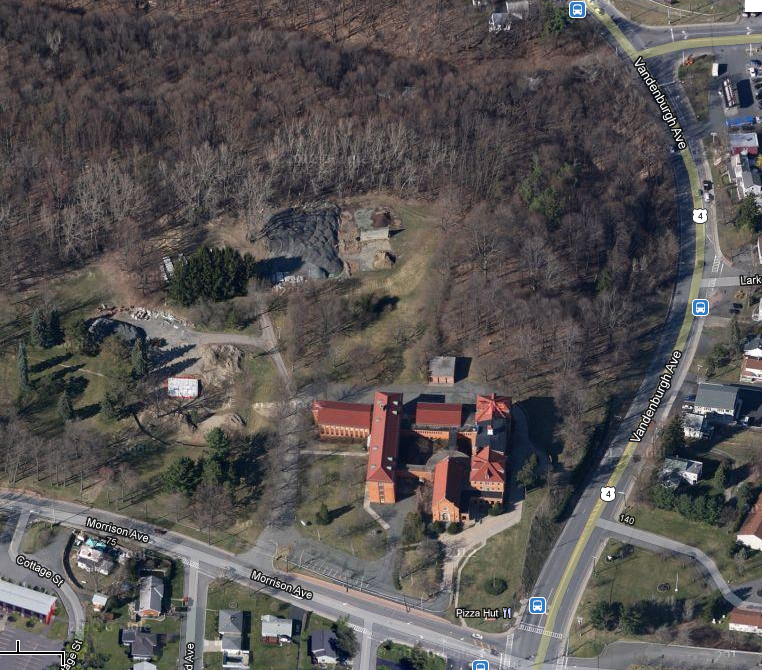
Until I ran across it on the Troy Irish Genealogy Society’s website, I had never heard of the Nail Factory Cemetery, but apparently it was once a well-known feature at the top of the Wynantskill’s descent to the Hudson.
Arthur James Weise’s “The City of Troy and Its Vicinity” reports that the Troy Iron and Nail Factory Company conveyed land to the city in 1836 to serve as the Sixth Ward Cemetery. It was only about an acre of land, so the many deceased of the sixth ward must have been buried very close together. The Genealogy Society says there are no records of when the cemetery was closed, or where the bodies were moved, but the latest burials it lists are around 1880.
The Troy Iron and Nail Factory was the successor enterprise to the rolling and slitting mill John Converse built on the Wynantskill in 1809. With others, he formed the iron and nail factory in 1813, which used hydropower to make bar iron, steel, nail rods, hoop iron, sheet copper and more. In 1824, Spafford’s Gazetteer said the factory comprised “a rolling and slitting mill, a very extensive nail factory, sundry shops for other mechanical business, and about 50 houses, making a busy, sequestered manufacturing village, which, in compliment to a man of distinguished merit, I shall call Adamsville….” He was honoring Col. Nathanael Adams, one of the partners in the enterprise. But by then the superintendent of the works was a guy by the name of Henry Burden, whose name would overshadow everyone else involved with the old nail factory as he built this enterprise into what would be the Burden Iron Works. Adamsville was quickly forgotten.
Given my love of local history, it would of course please me greatly to be memorialized in the Albany Rural Cemetery. However, if it were only possible, I think I’d have to prefer to be buried in the Nail Factory Cemetery, if only for the great name.
Want to know more about Henry Burden? Just follow these links:

Leave a Reply